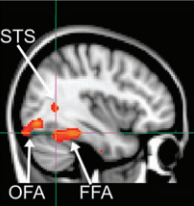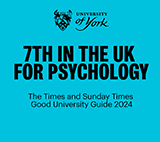Research brings new insights into face recognition
Posted on 7 March 2012
New research shows that responses to changing images of familiar and unfamiliar faces are surprisingly similar...

If you compare wedding photographs with holiday snaps, you'll have no trouble identifying friends' and relatives' faces even though the changes in expression, hairstyles, makeup, lighting etc. make the pictures look very different. It is far less easy to identify the same face if it belongs to a stranger. Yet new research from the Jodie Davies-Thompson, Kath Newling and
Tim Andrews shows that, in a group of brain regions which are known to be specialised for processing faces, responses to changing images of familiar and unfamiliar faces are surprisingly similar. The explanation for our very different experiences of familiar faces may lie elsewhere.
The article appears in
Cerebral Cortex.
Notes to editors:
Jodie Davies-Thompson recently completed her PhD at York and is now a
post-doctoral researcher at the University of British Columbia. Both
Jodie and Kath Newling are graduates of our MSc Cognitive Neuroscience
programme, and the paper describes work carried out as part of Jodie's
PhD supervised by Tim Andrews, who is a member of the MSc Cognitive
Neuroscience teaching team. Dr Davies-Thompson's MSc and PhD training
was funded by an ESRC 1+3studentship and Dr Andrews' research program is
supported by the Welcome Trust.



